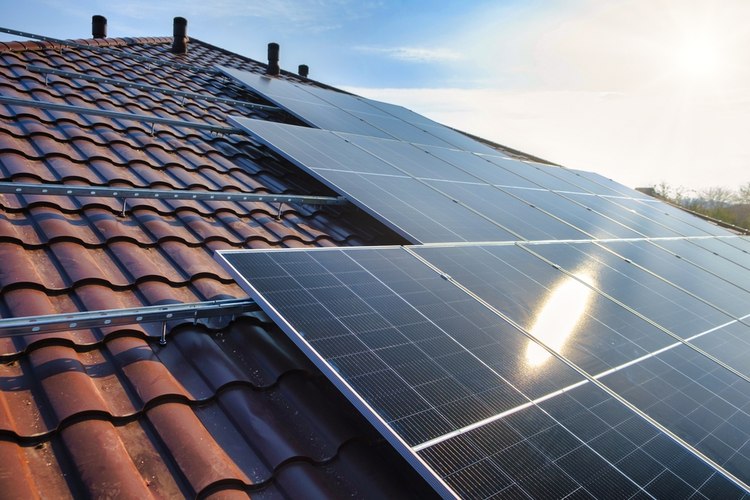Solar Panels in the United States: What You Should Know in 2025
As we approach 2025, solar energy continues to play an increasingly significant role in the United States' renewable energy landscape. With advancements in technology and growing environmental awareness, more homeowners and businesses are considering solar panels as a viable energy solution. This article explores the current state of solar energy in the U.S., how solar panels work, and what potential adopters should consider.

Why Solar Panels Are Gaining Popularity
The rise in solar panel adoption across the United States can be attributed to several factors. Firstly, the cost of solar technology has decreased significantly over the past decade, making it more accessible to a broader range of consumers. Additionally, federal and state incentives, such as tax credits and rebates, have made solar installations more financially attractive.
Environmental concerns also drive the shift towards solar energy. As awareness of climate change grows, many Americans are seeking ways to reduce their carbon footprint. Solar panels offer a clean, renewable energy source that can significantly lower household or business reliance on fossil fuels.
Furthermore, advancements in solar panel efficiency and energy storage solutions have improved the overall performance and reliability of solar systems. This has made solar energy a more practical option for regions with varying weather conditions.
How Do Solar Panels Work?
Solar panels harness the sun’s energy and convert it into electricity through a process known as the photovoltaic effect. Each panel consists of numerous photovoltaic cells made from silicon or other semiconductor materials. When sunlight hits these cells, it excites electrons, causing them to flow and generate an electric current.
This direct current (DC) electricity is then converted to alternating current (AC) by an inverter, making it compatible with the standard electrical systems used in homes and businesses. Excess energy can be stored in batteries for later use or fed back into the power grid, depending on the system setup and local regulations.
The efficiency of solar panels has improved significantly in recent years, with some modern panels capable of converting over 20% of the sunlight they receive into usable electricity. This increased efficiency means that fewer panels are needed to generate the same amount of power, making solar systems more compact and cost-effective.
Common Signs You Might Benefit From Solar
Several indicators suggest that a property might be well-suited for solar panel installation:
-
High electricity bills: If you consistently face high energy costs, solar panels could help offset these expenses over time.
-
Ample roof space: A large, unobstructed roof area that receives plenty of direct sunlight is ideal for solar panel installation.
-
Homeownership: Owning your home allows for more freedom in making long-term investments like solar panels.
-
Local incentives: Some areas offer additional rebates or tax incentives for solar installations, making the investment more attractive.
-
Aging roof: If your roof needs replacement soon, it might be an opportune time to consider solar panel installation simultaneously.
-
Environmental concerns: For those looking to reduce their carbon footprint, solar energy provides a significant opportunity to use clean, renewable power.
Average Costs of Solar Panels in the U.S.
The cost of solar panel systems in the United States varies depending on factors such as system size, location, and equipment quality. As of 2025, the average cost of a residential solar panel system ranges from $15,000 to $25,000 before incentives. However, prices can be higher or lower based on specific circumstances.
Here’s a breakdown of estimated costs for different system sizes:
| System Size (kW) | Average Cost Before Incentives | Estimated Annual Energy Production |
|---|---|---|
| 5 kW | $13,000 - $16,000 | 5,000 - 7,500 kWh |
| 10 kW | $20,000 - $28,000 | 10,000 - 15,000 kWh |
| 15 kW | $28,000 - $40,000 | 15,000 - 22,500 kWh |
Prices, rates, or cost estimates mentioned in this article are based on the latest available information but may change over time. Independent research is advised before making financial decisions.
It’s important to note that while the initial investment may seem substantial, solar panels can significantly reduce or eliminate electricity bills over their lifespan, typically 25-30 years. Additionally, various financing options, including solar loans and leases, have made solar more accessible to a broader range of homeowners.
The return on investment for solar panels depends on factors such as local electricity rates, available incentives, and the amount of sunlight your property receives. In many cases, homeowners can recoup their initial investment within 7-10 years through energy savings.
As we move further into 2025, the solar industry continues to evolve. Technological advancements are likely to improve panel efficiency and reduce costs further, making solar energy an increasingly attractive option for American households and businesses. While the decision to invest in solar panels requires careful consideration of individual circumstances, the growing accessibility and benefits of solar energy suggest that it will play an increasingly important role in the U.S. energy landscape in the years to come.




